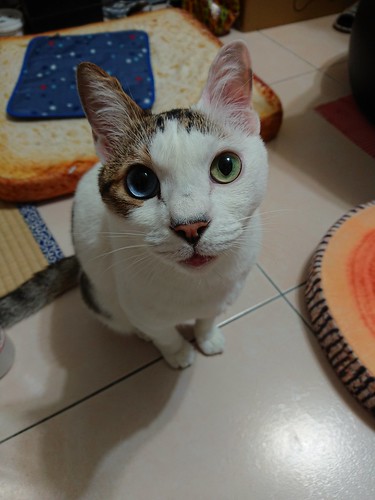E co-transfected the expression vectors for GLI1, GLI2 and GLI3 with the 0.24 kb gastrin luciferase reporter (GAST-Luc) or the control GLI-responsive reporter plasmid 8xGli-BS-Luc (Fig. 4A) into AGS cells. Indeed, we Epigenetic Reader Domain observed a 50 percent decrease (P = 0.001) in GAST promoter activity when transfected with GLI2, but not GLI1 or GLI3, suggesting a GLI2-specific transcriptional regulatory effect on the GAST promoter (Fig. 4B). To determine if GLI2 directly binds the GAST promoter, we performed chromatin immunoprecipitation (ChIP) for GLI2 in AGS cells and found that GLI2 binds the proximal human gastrin promoter (Fig. 4C). In particular, GLI2 bound to the GAST promoter to a similar extent as ZBP-89 (Fig. 4C), another zinc finger protein that we have previously identified as a transcriptional repressor of the GAST promoter through a GC-rich element in the proximal promoter  [31]. Next we considered the possibility that Gli2 might repress Gast gene expression in vivo, and thus induce a phenotype similar to that observed in the Gast2/2 mice. To test this hypothesis, we examined the level of Gast gene expression in the Shh-Cre;R26LSL-rtTA;tetO-GLI2DN (GLI2DN) mice, which conditionally express constitutively-active MYC-tagged GLI2 (GLI2DN) in the epithelium in the presence of doxycycline. Indeed, Gast gene expression (P = 0.056) (Fig. 5A) and the number of gastrinexpressing cells (Fig. 5C, green) decreased in the induced GLI2DN mice after only 3 days of doxycycline treatment, while Il-1b gene expression tended to increase (P = 0.38) (Fig. 5B). We also observed increased proliferation (Fig. 5D) and distorted gland morphology over the same time period (Fig. 5C top panel). However, Autophagy changes in Il-6 or Il-11 mRNA expression (data not shown) or a significant inflammatory infiltrate was not observed (Fig. 5C, top panel). Therefore, we concluded that epithelial GLI2 activation and Il-1b can induce loss of Gast gene expression while increasing proliferation, leading to dysplastic changes in the gastric antrum.DiscussionHh signaling is important for maintenance of the gastric mucosa [10,11]. However it remains unclear whether deregulation of the Hh signal leads to preneoplastic changes and eventually gastric cancer. Therefore, the goal of our study was to determine if Hh signaling contributed to early preneoplastic changes in the antrum where the etiology of gastric cancers has not been well-established. Normal Shh expression is highest in the corpus and decreases in the antrum [9]. In addition, expression during Helicobacter infection also reduces ligand expression especially in the corpus [6]. It is important to note that we did not observe histological changes in the corpus when Hh signaling was examined on a Gast2/2 background in which the stomach was hypochlorhydric [6,39]. Consistent with this finding there was a decrease
[31]. Next we considered the possibility that Gli2 might repress Gast gene expression in vivo, and thus induce a phenotype similar to that observed in the Gast2/2 mice. To test this hypothesis, we examined the level of Gast gene expression in the Shh-Cre;R26LSL-rtTA;tetO-GLI2DN (GLI2DN) mice, which conditionally express constitutively-active MYC-tagged GLI2 (GLI2DN) in the epithelium in the presence of doxycycline. Indeed, Gast gene expression (P = 0.056) (Fig. 5A) and the number of gastrinexpressing cells (Fig. 5C, green) decreased in the induced GLI2DN mice after only 3 days of doxycycline treatment, while Il-1b gene expression tended to increase (P = 0.38) (Fig. 5B). We also observed increased proliferation (Fig. 5D) and distorted gland morphology over the same time period (Fig. 5C top panel). However, Autophagy changes in Il-6 or Il-11 mRNA expression (data not shown) or a significant inflammatory infiltrate was not observed (Fig. 5C, top panel). Therefore, we concluded that epithelial GLI2 activation and Il-1b can induce loss of Gast gene expression while increasing proliferation, leading to dysplastic changes in the gastric antrum.DiscussionHh signaling is important for maintenance of the gastric mucosa [10,11]. However it remains unclear whether deregulation of the Hh signal leads to preneoplastic changes and eventually gastric cancer. Therefore, the goal of our study was to determine if Hh signaling contributed to early preneoplastic changes in the antrum where the etiology of gastric cancers has not been well-established. Normal Shh expression is highest in the corpus and decreases in the antrum [9]. In addition, expression during Helicobacter infection also reduces ligand expression especially in the corpus [6]. It is important to note that we did not observe histological changes in the corpus when Hh signaling was examined on a Gast2/2 background in which the stomach was hypochlorhydric [6,39]. Consistent with this finding there was a decrease  in Gli1 expression, in the absence of an obvious inflammatory infiltrate. However in contrast to the corpus, Gli2 reporter expression on the Gast2/2 genetic background was increased in the epithelial cells ofthe deep antral glands where hyperplastic changes were also observed. Due to the dissociation between Shh and Gli1 compared to Gli2 expression, we concluded that the epithelial expression of Gli2 was likely Shh-independent. The epithelial-specific expression of constitutively activated GLI2 (GLI2DN) in vivo proved to be sufficient to induce the loss of Gast gene expression and to induce Il-1b expression and antral hyperplasia.E co-transfected the expression vectors for GLI1, GLI2 and GLI3 with the 0.24 kb gastrin luciferase reporter (GAST-Luc) or the control GLI-responsive reporter plasmid 8xGli-BS-Luc (Fig. 4A) into AGS cells. Indeed, we observed a 50 percent decrease (P = 0.001) in GAST promoter activity when transfected with GLI2, but not GLI1 or GLI3, suggesting a GLI2-specific transcriptional regulatory effect on the GAST promoter (Fig. 4B). To determine if GLI2 directly binds the GAST promoter, we performed chromatin immunoprecipitation (ChIP) for GLI2 in AGS cells and found that GLI2 binds the proximal human gastrin promoter (Fig. 4C). In particular, GLI2 bound to the GAST promoter to a similar extent as ZBP-89 (Fig. 4C), another zinc finger protein that we have previously identified as a transcriptional repressor of the GAST promoter through a GC-rich element in the proximal promoter [31]. Next we considered the possibility that Gli2 might repress Gast gene expression in vivo, and thus induce a phenotype similar to that observed in the Gast2/2 mice. To test this hypothesis, we examined the level of Gast gene expression in the Shh-Cre;R26LSL-rtTA;tetO-GLI2DN (GLI2DN) mice, which conditionally express constitutively-active MYC-tagged GLI2 (GLI2DN) in the epithelium in the presence of doxycycline. Indeed, Gast gene expression (P = 0.056) (Fig. 5A) and the number of gastrinexpressing cells (Fig. 5C, green) decreased in the induced GLI2DN mice after only 3 days of doxycycline treatment, while Il-1b gene expression tended to increase (P = 0.38) (Fig. 5B). We also observed increased proliferation (Fig. 5D) and distorted gland morphology over the same time period (Fig. 5C top panel). However, changes in Il-6 or Il-11 mRNA expression (data not shown) or a significant inflammatory infiltrate was not observed (Fig. 5C, top panel). Therefore, we concluded that epithelial GLI2 activation and Il-1b can induce loss of Gast gene expression while increasing proliferation, leading to dysplastic changes in the gastric antrum.DiscussionHh signaling is important for maintenance of the gastric mucosa [10,11]. However it remains unclear whether deregulation of the Hh signal leads to preneoplastic changes and eventually gastric cancer. Therefore, the goal of our study was to determine if Hh signaling contributed to early preneoplastic changes in the antrum where the etiology of gastric cancers has not been well-established. Normal Shh expression is highest in the corpus and decreases in the antrum [9]. In addition, expression during Helicobacter infection also reduces ligand expression especially in the corpus [6]. It is important to note that we did not observe histological changes in the corpus when Hh signaling was examined on a Gast2/2 background in which the stomach was hypochlorhydric [6,39]. Consistent with this finding there was a decrease in Gli1 expression, in the absence of an obvious inflammatory infiltrate. However in contrast to the corpus, Gli2 reporter expression on the Gast2/2 genetic background was increased in the epithelial cells ofthe deep antral glands where hyperplastic changes were also observed. Due to the dissociation between Shh and Gli1 compared to Gli2 expression, we concluded that the epithelial expression of Gli2 was likely Shh-independent. The epithelial-specific expression of constitutively activated GLI2 (GLI2DN) in vivo proved to be sufficient to induce the loss of Gast gene expression and to induce Il-1b expression and antral hyperplasia.
in Gli1 expression, in the absence of an obvious inflammatory infiltrate. However in contrast to the corpus, Gli2 reporter expression on the Gast2/2 genetic background was increased in the epithelial cells ofthe deep antral glands where hyperplastic changes were also observed. Due to the dissociation between Shh and Gli1 compared to Gli2 expression, we concluded that the epithelial expression of Gli2 was likely Shh-independent. The epithelial-specific expression of constitutively activated GLI2 (GLI2DN) in vivo proved to be sufficient to induce the loss of Gast gene expression and to induce Il-1b expression and antral hyperplasia.E co-transfected the expression vectors for GLI1, GLI2 and GLI3 with the 0.24 kb gastrin luciferase reporter (GAST-Luc) or the control GLI-responsive reporter plasmid 8xGli-BS-Luc (Fig. 4A) into AGS cells. Indeed, we observed a 50 percent decrease (P = 0.001) in GAST promoter activity when transfected with GLI2, but not GLI1 or GLI3, suggesting a GLI2-specific transcriptional regulatory effect on the GAST promoter (Fig. 4B). To determine if GLI2 directly binds the GAST promoter, we performed chromatin immunoprecipitation (ChIP) for GLI2 in AGS cells and found that GLI2 binds the proximal human gastrin promoter (Fig. 4C). In particular, GLI2 bound to the GAST promoter to a similar extent as ZBP-89 (Fig. 4C), another zinc finger protein that we have previously identified as a transcriptional repressor of the GAST promoter through a GC-rich element in the proximal promoter [31]. Next we considered the possibility that Gli2 might repress Gast gene expression in vivo, and thus induce a phenotype similar to that observed in the Gast2/2 mice. To test this hypothesis, we examined the level of Gast gene expression in the Shh-Cre;R26LSL-rtTA;tetO-GLI2DN (GLI2DN) mice, which conditionally express constitutively-active MYC-tagged GLI2 (GLI2DN) in the epithelium in the presence of doxycycline. Indeed, Gast gene expression (P = 0.056) (Fig. 5A) and the number of gastrinexpressing cells (Fig. 5C, green) decreased in the induced GLI2DN mice after only 3 days of doxycycline treatment, while Il-1b gene expression tended to increase (P = 0.38) (Fig. 5B). We also observed increased proliferation (Fig. 5D) and distorted gland morphology over the same time period (Fig. 5C top panel). However, changes in Il-6 or Il-11 mRNA expression (data not shown) or a significant inflammatory infiltrate was not observed (Fig. 5C, top panel). Therefore, we concluded that epithelial GLI2 activation and Il-1b can induce loss of Gast gene expression while increasing proliferation, leading to dysplastic changes in the gastric antrum.DiscussionHh signaling is important for maintenance of the gastric mucosa [10,11]. However it remains unclear whether deregulation of the Hh signal leads to preneoplastic changes and eventually gastric cancer. Therefore, the goal of our study was to determine if Hh signaling contributed to early preneoplastic changes in the antrum where the etiology of gastric cancers has not been well-established. Normal Shh expression is highest in the corpus and decreases in the antrum [9]. In addition, expression during Helicobacter infection also reduces ligand expression especially in the corpus [6]. It is important to note that we did not observe histological changes in the corpus when Hh signaling was examined on a Gast2/2 background in which the stomach was hypochlorhydric [6,39]. Consistent with this finding there was a decrease in Gli1 expression, in the absence of an obvious inflammatory infiltrate. However in contrast to the corpus, Gli2 reporter expression on the Gast2/2 genetic background was increased in the epithelial cells ofthe deep antral glands where hyperplastic changes were also observed. Due to the dissociation between Shh and Gli1 compared to Gli2 expression, we concluded that the epithelial expression of Gli2 was likely Shh-independent. The epithelial-specific expression of constitutively activated GLI2 (GLI2DN) in vivo proved to be sufficient to induce the loss of Gast gene expression and to induce Il-1b expression and antral hyperplasia.
